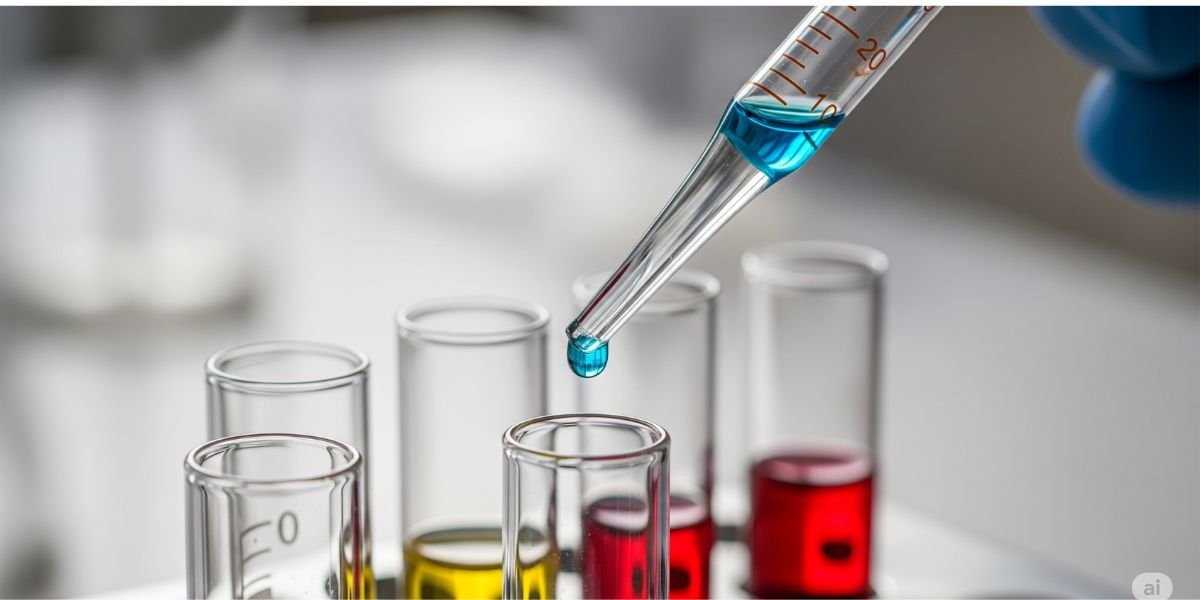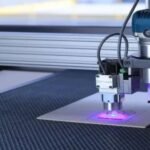In scientific research, pipettes provide high levels of convenience and experimental integrity. The use of micropipettes is equally important for optimizing different laboratory tasks. Evaluating different types helps researchers choose the best tools for accurate and reproducible results. Scientists can perform simple transfers as well as transfers requiring extreme precision. The right choice depends on research needs, experimental precision requirements, and reproducibility standards.
A quality pipette is the best tool for demanding scientific experiments. Quality pipettes in science help collect exact amounts of liquid and achieve high accuracy levels. In laboratories and research centers, safety and contamination prevention play key roles. Good pipettes help scientists use liquids correctly during experiments. Understanding the main types and their applications is essential for obtaining accurate results. Best practices in handling techniques help researchers understand the entire process.
Types of Science Pipettes
Science uses various instruments for precision and reproducibility. Several types of pipettes require greater accuracy than others. Today, everyone can choose a quality pipette tip box for their needs. Scientific practice offers a wide selection of various science pipettes. Evaluating each type is critical for specific experimental requirements. Pipettes are used for different applications with varying precision needs. Here are the key types and their characteristics:
- Volumetric pipettes. These pipettes provide the most accurate measurements for single volumes. Researchers use volumetric pipettes in analytical chemistry to accurately measure liquids.
- Graduated pipettes. These pipettes are excellent for measuring variable volumes with clear markings. Graduated pipettes are commonly used in biology and general laboratory research.
- Micropipettes. These instruments handle tiny volumes with high precision. Micropipettes are frequently used for microliter volumes in molecular biology and biochemistry.
- Multichannel pipettes. These tools are standard for transferring small amounts of liquid simultaneously. Pipettes science is used for high-throughput testing applications. They work best for transferring multiple samples at once.
- Pasteur pipettes. These are glass or plastic tools for transferring small liquid amounts. Pasteur pipettes are used in routine research where high accuracy is not essential.
- Electronic pipettes. These instruments minimize physical strain during repetitive pipetting tasks. Electronic pipettes help automate dispensing procedures for improved accuracy and consistency.
- Serological pipettes. These science pipettes handle larger volumes effectively in laboratory settings. Serological pipettes are commonly used in microbiology and tissue culture applications.
What Are Pipettes Used for in Science?
Pipettes are used across many different scientific fields. These tools are essential for work in biology, chemistry, industry, and medicine. High-quality pipettes are indispensable for accurate volume transfer in research. Pipettes are used in settings where liquids require precise handling. Researchers can accurately measure and transfer liquids for various experimental purposes. The critical question today is “What are pipettes used for in science?” And here is key information about their use:
- Pipettes are indispensable for molecular biology and genetic research. These tools help researchers handle RNA, DNA, and various enzymes safely. Scientists use pipettes with reagents in genetic research to achieve precise results.
- Quality pipettes are essential for cell culture work and cellular research. Pipettes add or remove various culture media without damaging delicate cells. Researchers use pipettes carefully to avoid cell damage, which can compromise experimental results.
- Pipettes are indispensable in analytical chemistry for precise measurements. Researchers use pipettes with standard solutions and solvents for accurate results. Pipettes are commonly used in analytical chemistry for titration procedures.
- Pipettes are also used in clinical diagnostics for medical testing. Doctors and technicians use pipettes to collect blood samples for various analyses. Biochemical testing frequently relies on pipettes for sample preparation.
- Pipettes are used in pharmaceutical research to measure active compounds precisely. Researchers develop drugs by transferring liquids with exact measurements and control.
- Pipettes science is used in environmental science and food industry applications. Researchers analyze soil and water samples for nutrient content using pipettes. In food science, researchers test nutritional content and quality using these tools.
What is a Micropipette Used for in Chemistry?
Chemical research requires high precision and maximum contamination prevention. Micropipettes are the best tools for handling small samples with accuracy. Chemistry often uses small volumes for various studies and experiments. Researchers work in the microliter range to conduct precise studies. Micropipettes are essential for precise work where small errors can be costly. Here are the key answers “What is a micropipette used for in chemistry”:
- Micropipettes are indispensable for setting up chemical reactions accurately. Researchers add various reagents and solvents in specific measured amounts. Scientists typically use microliter volumes to achieve success and precision.
- Chemistry requires constant sample preparation, which can be time-consuming. Micropipettes play a considerable role in precise sample preparation. Researchers use them to dilute various solutions for spectroscopic analysis.
- In analytical procedures, micropipettes provide precise measurement capabilities. Micropipettes help researchers reproduce measurements in quantitative analysis for reliable results.
- Researchers use micropipettes to conduct enzyme kinetics studies effectively. Scientists precisely measure specific concentrations of different enzymes for accurate results.
- Micropipettes are used for chemical synthesis of experimental compounds. Researchers use micropipettes to measure tiny volumes of valuable reagents accurately.
- Researchers also use micropipettes to calibrate analytical instruments precisely. Scientists prepare standard solutions for analytical devices using micropipettes for accuracy.
Micropipettes are essential tools for achieving good results in chemistry. Quality micropipette chemistry helps reproduce maximum accuracy for small volume measurements. Micropipettes are used in precise experiments for reliable and consistent results. Measuring in microliters helps achieve significant progress in chemical research.
Small Scientific Glass Tube Pipette (Pasteur Pipette)
A Pasteur pipette is a well-known tool in scientific research worldwide. Pasteur pipettes are used for precise measurement and liquid handling. These pipettes are disposable, inexpensive, and straightforward to use effectively. Due to frequent laboratory use, these pipettes are a cost-effective option. Pasteur pipettes are made of glass or plastic, depending on accuracy needs. Here are the key applications of a small scientific glass tube pipette:
- Researchers use Pasteur pipettes to transfer various liquids between containers. These tools transfer small quantities without requiring precise volume measurements. The process is straightforward because it avoids measuring specific volumes accurately.
- Pasteur pipettes are indispensable for layering solutions during research procedures. Scientists use pipettes to add liquids with maximum care and control. This process avoids mixing various essential layers in gradient preparations.
- Small scientific glass tube pipettes are used to remove supernatants from experimental samples. Researchers collect clear liquid that settles above particles during centrifugation procedures.
- Pipettes are essential tools for adding reagents drop by drop. Researchers use Pasteur pipettes for staining and various chemical testing procedures. These pipettes are important for titration procedures where precision and accuracy matter.
- Researchers use Pasteur pipettes to handle biological samples safely. Scientists minimize contamination risks in laboratories where sterility and accuracy are crucial.
- Science pipettes are used for histology applications with tissue staining. Researchers apply special dyes to tissue samples for microscopic examination.
Pasteur pipettes are extremely important for laboratory efficiency and results. These pipettes are versatile and inexpensive, making them excellent choices for routine work. Pasteur pipettes are essential for standard laboratory settings to achieve good results. Even minor contamination can become a serious problem for experimental outcomes. Pasteur pipettes do not require detailed accuracy but are essential for reliable results.
Proper Pipetting Techniques
Quality pipettes are essential for accurate liquid transfer in experiments. Pipettes are vital tools in laboratory, scientific, and chemical research. Pipettes help researchers achieve maximum productivity and reliable results. However, even the best pipettes can introduce errors without proper technique. Following proper pipetting techniques is key to obtaining good results. Researchers should follow safety protocols for reproducibility and accuracy standards. Only reliable results are possible with adequate pipette handling skills. Here are the best practices for using pipettes in various studies:
- Precision improves by pre-wetting pipette tips before actual use. Researchers should wet the tip to condition it properly and improve accuracy.
- During experiments, hold the pipette vertically for accurate liquid measurements. Even the smallest air bubble can affect experimental results significantly.
- Proper pipetting techniques include reasonable piston control and smooth operation. Researchers should avoid splashing and handle pipettes with steady movements. Consistent volume delivery is essential for achieving success during research.
- The right pipette tips play a significant role in measurement accuracy. Good tips provide proper compatibility and prevent measurement errors effectively. Quality tips help prevent leakage and lead to reliable results.
- It is essential to avoid contamination when working with pipettes. Change tips between samples to minimize mixing of different liquids.
- Regular calibration and maintenance ensure pipette accuracy over time. Check pipette performance periodically using gravimetric methods for verification.
Pipettes in science are critical tools for accurate liquid measurement in scientific research. Many researchers prefer quality pipettes for achieving reliable experimental results. Different types of pipettes are used depending on research requirements. Each type has unique capabilities and specific measurement accuracy ranges. With numerous pipettes available in the market, everyone can find suitable tools. Remember to use correct handling methods to achieve experimental success.
















